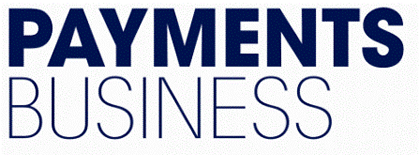 By Brian Weiner
By Brian Weiner
A few weeks back I forgot my wallet at home, but it didn’t slow me down at all. If this had happened a few years ago it would have been a very different day.
But today I can pay for my parking, morning coffee and purchases throughout the day using my smartphone: wherever contactless transactions are accepted. Here in Canada, that’s most places I shop.
Change and progress
Visa recently marked our 60th anniversary, which gave us the chance to reflect on just how much has changed in the payments space. We started out offering paper cards with a $300 limit. Today, through VisaNet, our advanced global processing network, we handle more than 65,000 transaction messages each second: processing payments in more than 200 countries and territories around the world.
I’m just shy of 15 years working in the Canadian payments space and the progress through that time has been remarkable. Advances in payment security like neural networks and fraud detecting analytic tools, the advent of chip cards and the wave of contactless payments that has stretched across our nation have redefined how we see and use payments.
Canadians have been tapping their way through retail checkouts for years and contactless penetration continues to grow, including at restaurants, grocery stores and coffee shops. As of June 2018, one in two card-present Visa transactions in Canada are made by tapping1. That adds up to 41 Visa-contactless transactions every second: which is a 30 per cent increase year over year2.
It’s clear that Canadians are comfortable tapping to pay, and we believe merchants value the speed of contactless transactions as well. Consumers should feel confident in the layers of security protecting contactless payments, including EMV chip technology, biometric authentication, advanced fraud analytics and zero liability.
Growth potential
There is particularly strong growth potential for contactless payments in the transit space. Visa’s recent Cashless Cities study found that transit agencies spend an average of 14.5 cents of every physical dollar collected, compared to 4.2 cents of every digital dollar.
TransLink in Metro Vancouver, British Columbia was the first transit operator to seize this opportunity in Canada by delivering the first “tap to pay” transit fare option in the country (see “Modernizing Canada’s transit payments” May/June 2018 Payments Business). Visa cardholders simply have to tap their cards or phones to pay their TransLink fares: turning faster payments into faster commutes. People have embraced having an easy and cashless way to pay with the same Visa card that they use throughout their whole day, and without the need to carry a separate card that is only used for transit.
Just two months after launch TransLink saw more than 1 million taps across 160,000 unique riders3. Now, a number of cities such as Montreal, Laval and Edmonton are working to bring contactless payments to transit systems, mirroring the trend in leading cities around the world.
Even with all of this momentum, contactless payments still have lot of room for growth. For example, only 35 per cent of Canadian smartphone owners have made a payment with their devices4. Now that most of the major mobile platforms’ wallets have launched in Canada, we expect to see those numbers increase steadily.
Similarly, wearable form factors are still somewhat of a novelty for Canadians, with only a few smartwatches and devices offering payment options. Again, it’s only a matter of time until Canadians have more wearable payment choices. The appetite for payment-enabled wearables was evident when we launched prepaid tap-to-pay pins, gloves and rings earlier this year at the 2018 Winter Olympics in PyeongChang, South Korea.
More work ahead
As we race towards a future of faster payments we must continue to push the boundaries and enable more transactions to become contactless. All of us in the payments ecosystem—the networks, issuers, acquirers and merchants—should be thinking about our roles in driving contactless adoption. And further, we need to make sure that we are building and supporting payment advances that pave the way for the innovations of tomorrow.
The payments landscape has changed tremendously in the last several years and the way the Canadian market has embraced contactless payments is only one example of that. How people pay will always evolve. The need to carry physical wallets and plastic cards will continue to decrease and the need for speed, coupled with convenience and security, will continue to take precedence in all aspects of payments.
Driving more opportunities for contactless payments must remain high on the priority list for our collective industry. It’s exciting to think of the role we can all play in making the future of payments faster.
Brian Weiner is vice president and head of product, Visa Canada.
1 VisaNet, data, domestic, card-present transactions, June 2017 and June 2018.
2 VisaNet, data, domestic, card-present transactions, June 2018. Calculation based on number of seconds in a 30-day month.
3 TransLink, “One millions taps—Tap to Pay hits a milestone”, The Buzzer, July 27, 2018.
4 comScore custom survey, Visa Canada Mobile Wallet & Transactions Research 2017 (n=1043).Set featured image




